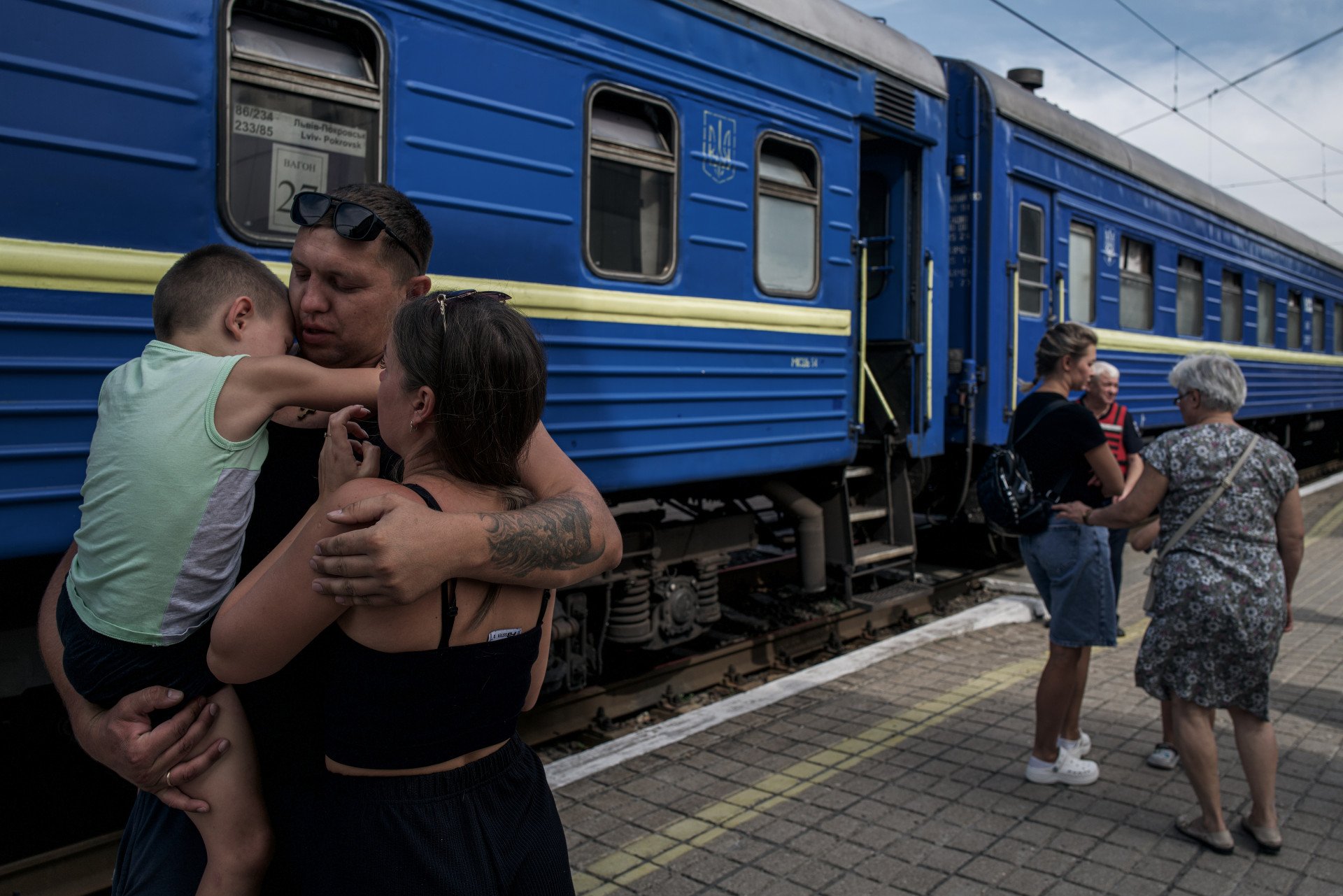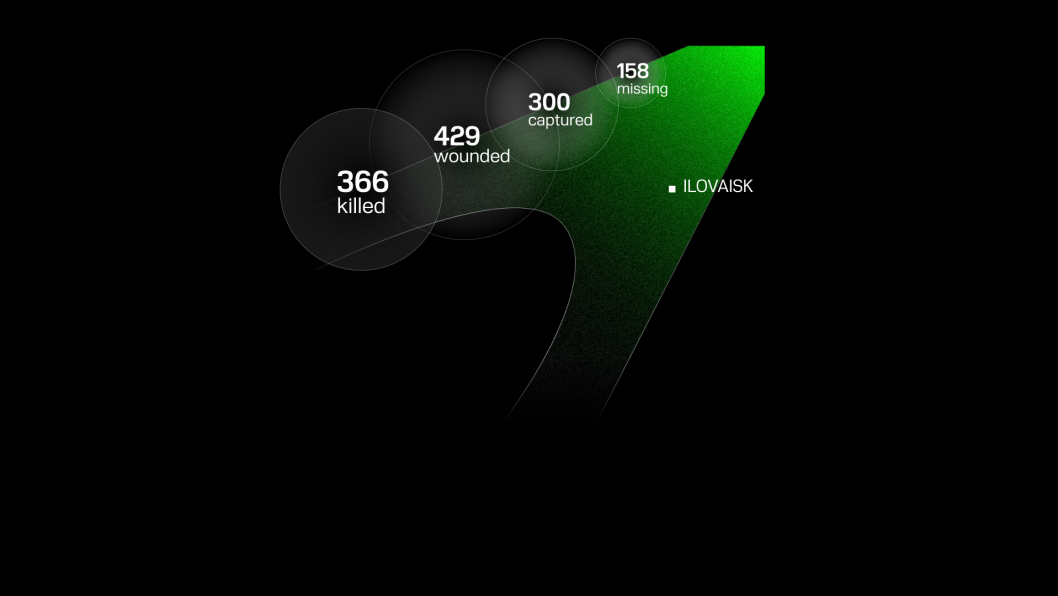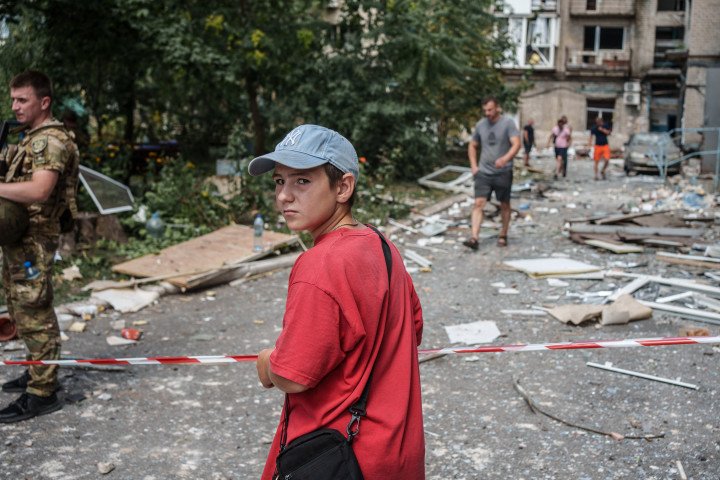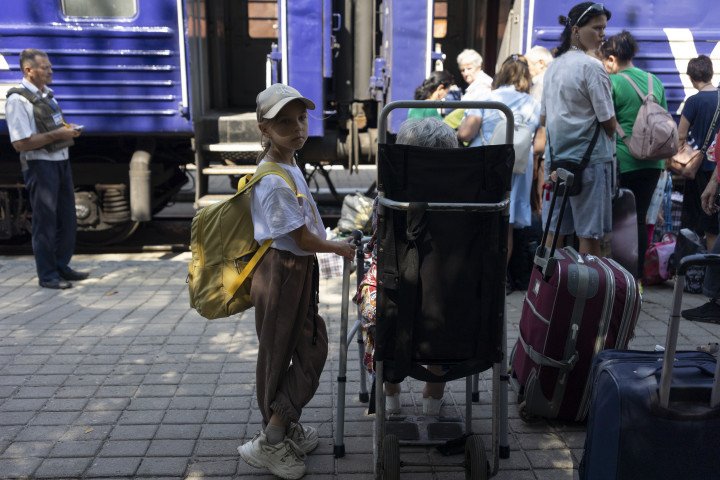- Category
- War in Ukraine
Pokrovsk City’s Evacuation Presses On as Russians Advance. What Is the Process?

As Russia escalates its full-scale invasion of Ukraine and its troops close in on Pokrovsk, civilians are being evacuated in large numbers. How are cities evacuated and what is the process?
Since Russia’s invasion in 2014, hundreds of thousands of Ukrainians have been forced to leave their homes and move to safer territories or abroad.
On August 19, 2024, Ukrainian authorities ordered one of the most recent large-scale compulsory evacuations from Pokrovsk, a crucial military logistics hub in the Donetsk region. The evacuations are ongoing.
"Recently the front has come too close," the Donetsk region governor Vadym Filashkin said while making the initial evacuation order of children and their parents from 14 localities in the area.
Evacuations are absolutely necessary to keep families safe but a move like this is one families dread to endure. Lives are turned upside down, and whether they’ll ever be able to return to their homes remains in question.
Despite warnings and the serious increase of Russian hostility in the area, some choose not to evacuate, remaining in their homes. Those who do evacuate, face not only a dangerous road ahead but immense stress which can have serious health implications. How do people evacuate? What support is available and where do they go?
How do evacuations work?
Evacuations are coordinated between many authorities, such as; civil-military administrations, police, Ukraine’s State Emergency Services (DSNS), Red Cross administrations, local government, and military personnel work to provide the safest evacuation routes possible.
The Territorial Defense of Ukrainian Armed Forces has a hotline to call should people need help with evacuation. Families with disabled, injured, or elderly family members may need extra support.
Evacuated civilians are provided with free housing in places of compact residence, these are often dormitories. Families often attempt to find new housing and safe shelter for themselves in nearby cities with family or friends.
The state provides a variety of assistance, from one-time payments to support their move along with humanitarian, psychological, and medical assistance and other services.
Ukraine’s Economy Ministry launched a government program called “eRobota” with the opportunity for people to apply for business grants. Many civilians fear leaving not only their homes but their careers and businesses behind.
Documents and personal belongings
It's vital to collect all documents, passports, medical paperwork, birth certificates, etc. Documents are always good to have on hand, however, civilians can still be evacuated even without documentation.
People should take with them as little as possible and are advised to take essential items only.
People can evacuate with their pets and live with them in their new temporary accommodation. Pet owners must submit an application to ensure that sanitary standards and living conditions are met.
"The residents of Pokrovsk have a maximum of two weeks to evacuate"
— Oriannalyla 🇺🇦 (@Lyla_lilas) August 22, 2024
The russian army is approaching Pokrovsk. Forced evacuation of families with children became the only way of salvation. In conditions where even humanitarian aid is difficult to deliver, the life of every family… pic.twitter.com/epwkuUGcRE
Evacuation routes
Civilians are informed of the location of trains and columns of buses provided as evacuation transport methods. Many volunteer organizations provide extra support with evacuation cars and humanitarian aid. Private cars can join the evacuation route but are ordered to strictly follow the route.
Instead of a thousand words.
— Anton Gerashchenko (@Gerashchenko_en) August 25, 2024
Just on August 20th trains evacuated 371 people from Pokrovsk, 60 of them children. 23 cats and 11 dogs were taken to safety, as well.
Russia brings so much suffering and losses.
📷: Frontliner pic.twitter.com/8fueVgUFZs
A ceasefire has been announced along the evacuation route. However, since Russia’s invasion of Ukraine in 2014, Russian forces have repeatedly violated ceasefire agreements, including those for “green corridors.”
For the first two weeks of the Pokrovsk evacuation, trains were running from the city's main station, but on 5 September 2024, they were canceled due to increasing hostilities. Now, the evacuation train's departure is from Pavlohrad station, the Dnipropetrovsk region, around 100 km away.
Green corridors are protected by International Humanitarian Law (IHL) to facilitate the movement of civilians, other persons protected by IHL, and the delivery of humanitarian assistance.
The “Ilovaisk Tragedy” is one of Russia’s earliest atrocities in this war, which saw Ukrainian forces trapped between August 6th and 29th, 2014. Putin promised the encircled forces a green corridor for retreat, however, when Ukrainian forces began retreating, Russian forces opened fire. Russia killed 366 Ukrainian fighters, a total of 429 were wounded, and 300 were captured.
Citizens must remain vigilant.

What happens if civilians are caught under street fire?
The UNICEF team in Ukraine and the DSNS gave some tips on how to respond if caught under street fire while evacuating.
“If there’s a special shelter nearby, that’s the best place to go. If not, underground passages and parking lots, subway stations, basements, or the basements of buildings are also suitable.
If explosions are heard nearby and there’s no shelter in sight, get down on the ground fast, and take cover near a ledge, curb, or ditch.
If with a child, put them in the cover or hole first then cover them with your body.
Find a safe spot. Lie face down, cross your legs, cover your head with your hands, close your eyes, and open your mouth. This will protect you from getting hurt in the event of a close shell explosion.
Don’t look up unless you have to.
If you are on a bus, trolley, or tram, stop the vehicle, get away from the road, buildings, and structures, and lie down on the ground.”

Situation in Pokrovsk
The last civilian hospital in Pokrovsk had to relocate all staff, medical equipment, and supplies on September 6, 2024. This facility previously provided urgent and specialized care to war-wounded patients, particularly during mass casualty events.
A prolonged curfew is in place. Residents are only allowed to move around the city between 11 a.m. and 3 p.m. due to the increase of artillery in the area. However, those evacuating or using personal vehicles to transport belongings are allowed to travel outside these hours.
Between the 8 and 9th of September 2024, Russia launched 164 attacks on the positions of Ukrainian forces with the majority of attacks on the Pokrovsk, Kurakhove, and Toretsk front, General Staff of the Ukrainian Armed Forces wrote on Facebook.

Difficulties of evacuations
Our reporter, Alexander Query, recently visited Zoriane, a settlement in the Pokrovsk area. He accompanied Sebastian Płocharski, a Polish journalist and volunteer involved in evacuating people from the frontline. Płocharski noted that despite the dangers, many people continually refuse to evacuate.
Evacuation points are currently placed around the city, though the atmosphere is calm, civilians are visibly anxious.
“My children are picking me up, but I don’t want to leave,” said Valentyna, a local. “But they refuse to leave without us. So we’ve packed our bags, and we’re going. It’s very dangerous, just like last night— it’s terrible, really. But you know, that feeling of not wanting to leave outweighs any sense of danger. I know that I’m going nowhere, with nothing, just two little boxes of nothing.”
Roughly around 50% of people who refuse to be evacuated, will be killed, Płocharski said. Despite the dangers, about 26,000 people remain out of the city’s 86,000 pre-war population. In August, over 20,000 people were evacuated, humanitarian aid workers and local authorities continue to have the remaining evacuated, but there will always be some that stay.
-46f6afa2f66d31ff3df8ea1a8f5524ec.jpg)
-c42261175cd1ec4a358bec039722d44f.jpg)
-6359eca46c72bde40a90abaaadd6eaa8.png)
-29a1a43aba23f9bb779a1ac8b98d2121.jpeg)


-206008aed5f329e86c52788e3e423f23.jpg)